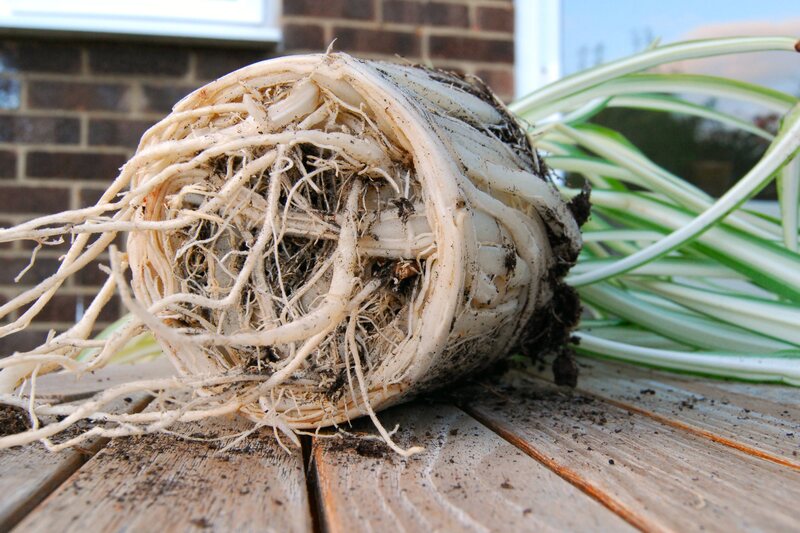How to Blend Fun and Safety in a Children's Garden
Posted on 10/06/2025
How to Blend Fun and Safety in a Children's Garden
Creating a children's garden is a wonderful way to encourage young ones to connect with nature while learning valuable lessons about plants, insects, and the environment. But as with any play space, balancing enjoyment with safety is essential. In this comprehensive guide, you'll discover practical strategies and creative ideas on how to blend fun and safety in a children's garden, ensuring an engaging and secure outdoor haven for your little gardeners.

Understanding the Importance of a Safe and Exciting Children's Garden
Children's gardens are more than decorative corners in the backyard. They are designated spaces that foster exploration, imagination, physical activity, and early ecological literacy. However, without proper planning, these spaces can also introduce risks. By prioritizing both fun and safety, you ensure children benefit from play, discovery, and learning--all within a protected environment.
- Imagination: Supports creative free play with thematic elements and inspiring features.
- Physical Activity: Encourages movement, agility, and coordination in a natural setting.
- Environmental Awareness: Teaches kids the basics of planting, composting, and wildlife through hands-on experiences.
- Safety: Reduces risk of accidents, allergies, and harmful exposures.
Planning Your Children's Garden: Blending Enjoyment with Protection
Start with a Safe Layout
When planning a children-friendly garden, the layout is your first defense against potential hazards. Envision how children will use the space and tailor features to their ages, interests, and capabilities. A well-designed garden will encourage curiosity while putting safety at the forefront.
- Enclose the garden with a secure fence to clearly define boundaries and keep children within safe parameters.
- Clear visibility: Design open sightlines for easy supervision at all times.
- Age-appropriate zones: Divide the garden into zones tailored for different age groups.
- Non-slip paths: Lay down smooth, even surfaces for walking and running to minimize falls.
Choose the Right Location
Select a spot that receives ample sunlight and shade, is free from overhead hazards (like falling branches or power lines), and is safe from wildlife or stray pets. Ensure the ground is level to reduce trip hazards.
Selecting Safe and Stimulating Plants for Kids
Avoid Toxic or Allergic Species
One of the most critical tips for merging fun and safety in a children's garden is careful plant selection. Avoid plants that are toxic if ingested or cause skin irritations.
- Steer clear of toxic species such as foxglove, oleander, lily of the valley, and nightshade.
- Select non-toxic, edible plants like cherry tomatoes, peas, strawberries, sunflowers, and herbs (basil, mint).
- Choose low-pollen plants to reduce allergy risks.
- Opt for gentle textures: Avoid thorny, spiky, or sharp-edged plants that can scratch delicate skin.
Introduce Kid-Friendly Plant Varieties
Enrich the garden's sense of wonder with plants that appeal to multiple senses:
- Colorful blooms: Marigolds, nasturtiums, and zinnias for visual interest.
- Fragrant herbs: Lavender, rosemary, and lemon balm for scent exploration.
- Textured leaves: Lamb's ear (soft, fuzzy leaves) for tactile fun.
Edible Gardening for Kids
Encourage healthy eating by growing vegetables and fruits together. Make a mini vegetable patch or berry garden, always checking for allergies among young gardeners.
Installing Safe and Creative Garden Features
Fun Structures with Safety in Mind
Creative structures can transform a children's garden into a wonderland--but every element must be child-safe.
- Raised beds with rounded corners: Easy to access and less likely to cause injuries.
- Exploration paths: Winding paths can be made using soft materials like wood chips, mulch, or rubber paving.
- Insect hotels and birdhouses: Invite beneficial wildlife for educational opportunities while keeping kids at a safe distance from bees and other stinging insects.
- Mud kitchens or potting tables: Encourage messy play with safe, age-appropriate tools.
Child-Proof Water Features
Water features such as fountains or splash areas are fun and sensory, but they must be extremely safe:
- No open ponds or deep basins: Use shallow birdbaths or recirculating fountains with minimal water volume.
- Always supervise water play and drain features when not in use.
- Install non-slip surfaces around all water elements.
Garden Paths and Surfaces: Combining Play with Protection
Mindful Pathways
Paths are a key element in every engaging children's outdoor area:
- Soft landing materials: Wood chips, play-grade mulch, or artificial turf cushion falls.
- Clearly defined routes: Brightly painted stones or pavers help guide kids and prevent wandering into unsafe areas.
- Regularly check for tripping hazards like roots, rocks, or raised edges.
Accessible Design
Ensure your children's garden design is inclusive:
- Wide pathways for strollers or wheelchairs.
- Raised beds at different heights for all ability levels.
- Gates and entrances that are easy to open but prevent unsupervised escapes.
Safe Play Equipment and Imaginative Play Zones
Install Safe Playground Features
Balance fun and safety with certified play equipment, installed according to manufacturer instructions:
- Choose age-appropriate climbing structures with soft, impact-absorbing surfaces below.
- Avoid tall slides or open swings in smaller gardens.
- Provide shaded areas to protect children from sun exposure during play.
Create Spaces for Creativity and Calm
Variety is key to an engaging children's garden:
- Story circles or quiet nooks with benches invite reading and reflection.
- Chalkboards or paintable surfaces encourage art and self-expression.
- Music elements (like outdoor xylophones or wind chimes) add a sensory play dimension.
Essential Safety Measures and Maintenance
Consistent Supervision
No matter how well-designed a garden is, adult supervision remains essential. Make the garden visible from the house or main play areas and establish clear rules for garden use.
Tool Safety and Storage
- Use child-sized tools made from safe materials with rounded edges.
- Lock up sharp or potentially dangerous tools when not in use.
- Store garden chemicals and fertilizers safely out of reach.
Regular Inspections and Upkeep
Bare foot traffic, digging, and play can quickly alter a garden's landscape. Inspect the garden regularly for:
- Loose boards or exposed hardware
- Toxic weeds or new plants introduced by wildlife
- Pest problems like bees nests or fire ant mounds
- Pathway damage or tripping hazards
- Rotten mulch or slippery surfaces
Seasonal Considerations for a Year-Round Children's Garden
Preparing the Garden for Each Season
Seasonal care ensures children's safety and constant engagement. For year-round fun and safety in a children's garden:
- Install shade sails, tents, or umbrellas for summer heat protection.
- Plant windbreaks or use temporary barriers during chilly winds.
- Opt for perennial plants for off-season color and interest.
- Check for ice, moss, or slippery leaves in autumn and winter.
- Change up features, like installing a sensory winter garden or autumn leaf-pile area.

Encouraging Learning and Play: Educational Activities for Young Gardeners
Fun Garden-Based Activities
Use the garden as a living classroom for a variety of activities:
- Planting and harvesting as a hands-on science lesson.
- Bug hunting and nature bingo for basic biology.
- Composting together to teach recycling and sustainability.
- Art with leaves and stones for creative expression.
- Story time under the trees for literacy.
Involve Children in Garden Decisions
Allowing children to participate in planning and planting builds responsibility, pride, and a deeper connection to the garden. Ask for their input on colors, themes, or plant selections appropriate for their age.
Conclusion: The Perfect Balance of Fun and Safety in a Children's Garden
Creating a children's garden that balances fun and safety is a rewarding endeavor that nurtures children's love of the outdoors and their sense of independence. With thoughtful design, safe materials, engaging features, and regular maintenance, you can establish an enchanting and protected environment for adventure, learning, and growth.
By following the strategies in this guide, you will master how to blend fun and safety in a children's garden, giving your young explorers unlimited opportunities to learn, play, and thrive--while you enjoy peace of mind.
Summary Tips for a Safe and Fun Children's Garden:
- Plan layout and supervise for safety
- Select non-toxic, kid-friendly plants
- Install soft, slip-resistant pathways
- Provide engaging, age-appropriate play equipment
- Check and maintain garden features regularly
- Adapt the garden for seasonal safety
- Create opportunities for learning and creativity
With the right approach, your children's garden will be the highlight of family life--where little ones can engage in safe, joyful outdoor play, every day of the year.

